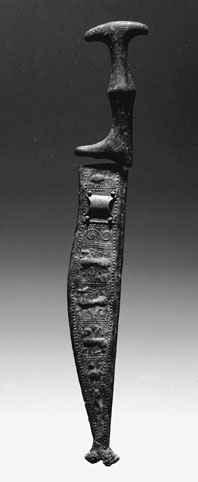

 | Page 292 |  |
on the banks of the Mosel River. Both ended up in the british museum, owing to, in the former case, lack of money to purchase them for the French nation and, in the latter case, total ignorance and lack of interest on the part of the Musée des Antiquités Nationales and the louvre. Still, it must be noted that it was Gabriel de Mortillet who in 1871 noted the similarity between metalwork found in the Marne region of France and that from graves at the site of the Etruscan city of Marzobotto near Bologna in Italy, thus for the first time identifying archaeological evidence for the Gaulish invasion of Italy recorded by the classical writers.
In France, as elsewhere, archaeology was used to bolster national pride, with excavations undertaken by the Emperor Napoleon Bonaparte and later by Napoleon III, who decided to write a history of Julius Caesar. In order to create a map of the Gauls in the first century b.c., Napoleon III set up a commission in 1858 to locate the places written about by Caesar in his De bello gallico, which were largely oppida (large-scale defended settlements) constructed of cross-timbers held together with iron nails and faced with stone blocks (muri gallici). Napoleon III’s interest in locating and excavating key sites of the late La Tène period that were described by Caesar continues today. At Mont Beuvray near Autun (ancient bibracte, where Caesar overcame the displaced Helvetii), where excavations started in 1865, work by an international team continues with the support of the president of France. An even more symbolic site of French aspirations to a great past is Mont Auxois (alesia), where Caesar recorded in detail his defeat of the Averni assembled in 52 b.c. under their chief Vercingetorix, who six years later was led to a horrid death through the streets of Rome.

A sixth-century a.d. bronze Celtic dagger and scabbard with figures of animals
(The Art Archive/Museo Civico Belluno/Dagli Orti [A])
The late La Tène period was one of increased centralization and tribal identity, and the latter can be particularly observed in the increased use of coinage. Coinage was introduced to Celtic warriors when, during the period of expansion of the fourth and third centuries b.c., Celts served increasingly as mercenaries in various parts of the Hellenistic world. The first native coins were struck at the beginning of the third century b.c. in the silver-rich eastern part of Europe, and they most closely follow the Macedonian prototypes. In the west, gold was the standard, and, although by no means the only prototype, it was the coins of Philip II of Macedon that most commonly were the models. At first prized simply as a sign of conspicuous
 |  |